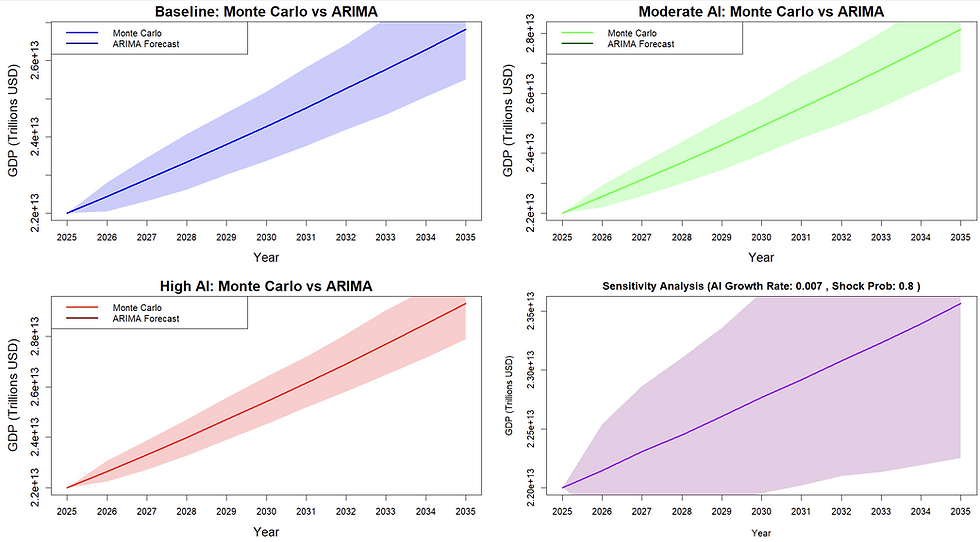Anticipating Cybersecurity Technology Breakthroughs
- Amir Bagherpour

- Mar 10
- 2 min read
Built a Model to Predict Cybersecurity Breakthroughs 🔍
💡 Cyber threats are advancing rapidly, and so are the technologies designed to combat them. But which cybersecurity innovations will truly break through? To answer this, I built a model leveraging Retrieval Augmented Generation (RAG), Gaussian sampling, and Weibull modeling to identify high-impact cybersecurity advancements.
🔎 How the Model Works:
📌 RAG for Dynamic Feature Weighting: Extracted insights from industry reports, emerging R&D, and cybersecurity trend analyses to align feature ranking with real-world technological advancements.
📌 Breakthrough Score (BTS): Ranked features based on RAG-weighted industry momentum and impact probability.
📌 Gaussian Sampling: Simulated natural fluctuations in cybersecurity feature adoption and effectiveness.
📌 Weibull Modeling: Captured disruptive shifts, predicting features most likely to reshape cyber defense.
💡 Key Cybersecurity Breakthroughs Identified by the Model:
🔹 1. AI-Driven Vulnerability Detection & Management 🔥
✔️ LLM-powered code analysis—automating vulnerability detection in software.
✔️ AI-driven remediation—accelerating autonomous bug fixing and patching.
✔️ Automated fuzz testing & penetration testing—proactively identifying security flaws before attackers do.
🔹 2. Content Classification & Enforcement 🛡️
✔️ LLM-powered threat detection—analyzing malicious content across text, images, and video.
✔️ Adaptive AI-driven policy enforcement—dynamically responding to evolving cyber threats.
✔️ Deepfake & AI-generated phishing detection—mitigating risks from synthetic cyber threats.
🔹 3. Tackling Data Challenges: AI-Augmented Security 📊
✔️ Synthetic security data generation—enhancing AI model training where real-world data is scarce.
✔️ Privacy-preserving AI—securing sensitive data while maintaining robust model training.
✔️ Self-supervised learning—reducing reliance on manually labeled cybersecurity datasets.
🔹 4. Mitigating LLM Risks 🤖🔐
✔️ LLM Guardrails—preventing adversarial attacks & unintended AI behaviors.
✔️ AI Red Teaming—stress-testing AI security models against emerging cyber threats.
✔️ Explainable AI (XAI)—bringing transparency to AI-driven cybersecurity decision-making.
📈 Model Insights & Visualizations:
📊 Kernel Density Plots: Revealed features with the highest probability of disruptive impact.
🔀 Sankey Diagram: Mapped how emerging cybersecurity technologies interact and evolve.
🚀 Takeaway:
By building this predictive model, I was able to pinpoint the emerging cybersecurity technologies most likely to drive innovation. Combining RAG-based weighting of industry trends, AI-driven analytics, and statistical modeling, this framework offers a structured approach to forecasting the future of cybersecurity.






Comments